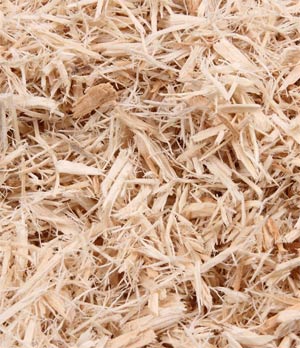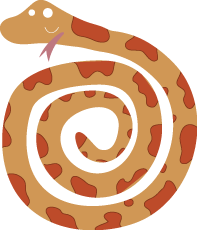All About Corn Snakes
Summary
Corn snakes make excellent choices as pet snakes as they are generally docile, relatively easy to care for and do not get very large therefore they make a great choice for beginner snake owners. They are native to the south-eastern United States, are mostly land-dwelling and are active mainly at night or at dusk and dawn.
Adult size:
- • 120cm – 190cm (4ft – 6ft)
Life span:
- • Corns have the potential to live for over 18 years; records exist of Corns over 22 years of age, so they are certainly a long-term commitment.

Considerations Before Purchasing:
- • Who will look after your new pet if you are away?
- • Can you provide fresh food for your pet?
- • Are you prepared to take on an animal that could live for 10 years?
- • Can you afford all the equipment necessary to keep your pet happy?
- • Have you done your research on Corn Snakes and their relevant care?
Enclosure:
Corn snakes are not highly active and do not need huge enclosures. A medium-sized enclosure (3 or 4 feet in length) will house an adult corn snake nicely. Viv or Terrarium are both fine. Hatchlings up to 18 months old need to be kept in an appropriately sized faunarium as they can become stressed in a large environments and stop feeding. Corn Snakes are also excellent escape artists, so care must be taken when planning their housing. It is advised to place at least two hides in your vivarium so that your Corn Snake will have a place to hide in both the warm and cool end of the enclosure. It is also advisable to place branches, rocks, stones, and plastic plants in their enclosure, as these provide a place for climbing and resting, they also aid the snake when shedding its skin.
Heating
The hot end of the enclosure should be 27˚C to 30˚C (81-86˚F) while the cool end should be approximately 23˚C to 26˚C (74-78˚F). 23˚C to 26˚C is normal room temperature, and they tend to use heat from the ground rather than the sun. Whichever method you choose, it will need to be used in conjunction with a thermostat and monitored with an accurate thermometer.
Substrate
The most frequently used substrates for Corn Snakes is aspen bedding as it allows for burrowing. A juvenile corn snake may need just a couple inches of substrate, however, for adults, adding even more can be very beneficial to allow the corn snake enough to feel comfortable, and even burrow if interested. Younger corn snakes are often more interested in burrowing than adults.

Lighting:
Every reptile needs a clean day/night cycle. This basically means a Corn Snake should have light during the day, and no light at night. However, specific lighting isn’t necessarily a requirement for Corn Snakes. It’s commonly agreed upon that Corn Snakes are crepuscular (most active at dawn and dusk). Sunrises and sunsets naturally do not let off much, if any ultraviolet rays, meaning UVB (ultraviolet B) lighting is not a necessity. With that said, many people noticed positive changes and effects when their Corn Snakes are given UVB light.
Feeding & Water:
Corn snakes eat 1 frozen/thawed mouse every 7-14 days, from pinkies to large mouse depending on the size of the corn snake. A large bowl of tap water should be present in their enclosure and will need to be replaced every day. Corn snakes are very easy to feed and almost never refuse a meal. Firstly, the easiest way to gauge what size mouse is needed is by comparing the girth of the mouse to the girth of your snake’s belly. The mouse should be about the same size around, or a touch larger. If you feed them a mouse equivalent to this size, feeding once a week is ideal. Because corn snakes vary in size, there is no exact food size to follow. A hatchling Corn Snake is best eating pinky mice, while adult corn snakes usually need adult or large mice. All mice should be “naturally” de-frosted by leaving them for a few hours (do NOT place in a microwave or in boiling water to speed up the thawing process).
Simply hold the mouse with snake tongs to avoid your hands being mistaken for food and shake the mouse around the head of your snake until it strikes and grabs the rodent. Avoid sudden jerks with the food after it’s been bitten. Pulling the mouse too hard could result in your snake losing a tooth, which is not only a waste of a mouse but very demanding on your snake’s body to vomit up. Wait 24 hours before handling and because Corn Snakes are crepuscular, feed your corn snake at the last part of the day.
A water dish is also necessary, and the water should be kept meticulously clean. Snakes often defecate in their water, and when this happens, the waste should be cleaned immediately. A heavy dish several inches in diameter makes a good water source. you may find your snake soaking in the dish, particularly before a shed.

Handling
Corn Snakes are quite active snakes and will appreciate time outside the vivarium to exercise. Care should be taken to avoid dropping your Corn Snake whilst handling, so support your Corn Snake at all times. Approximately 10-15 minutes 3-4 times a week is a suitable amount of time for handling your Corn Snake, but this may vary depending on the particular snake. Some Corn Snakes will appreciate more time outside of the vivarium while others may shy away from regular handling. It is important for hygiene reasons to wash your hands with an anti-bacterial wash before and after handling your Corn Snake.
Final Remarks:
Corn Snakes can make friendly long-lived additions to your family if they are provided with their essential care requirements. Pregnant women, young children and people with weakened immune systems should consult a doctor before exposure to any reptile. Please ask a friendly member of staff for advice if you require further information.
Check List:
- • Secure enclosure
- • Heat source
- • Thermostat
- • Thermometer
- • Water/Food bowl
- • Hides
- • Reptile disinfectant
- • Food substrate
- • Lighting Decor
- • Hand Sanitiser
- • Sprayer
- • Moss
- • Hygrometer
- • Water conditioner
- • Corn Snake Book
- • Supplements.

